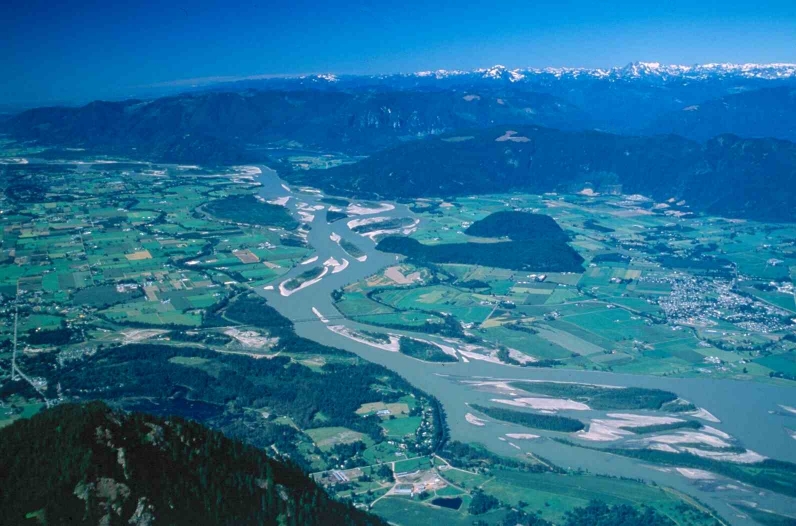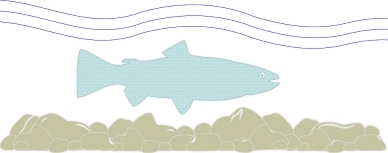 Fraser River presents a significant potential flood hazard to human
settlement
and activities within the Lower Mainland of British Columbia.
Efforts
have been underway for more than a century to protect settlements and
land
from the river.
Fraser River presents a significant potential flood hazard to human
settlement
and activities within the Lower Mainland of British Columbia.
Efforts
have been underway for more than a century to protect settlements and
land
from the river.
Between Laidlaw and Sumas Mountain (see figure), the riverbed
of Fraser
River is rising slowly because gravel that the river transports out of
the mountains is deposited there. The rising channel bed in turn
increases
water levels and threatens the channel banks. These effects reduce the
security against flooding provided by the dykes. There are several ways
to tackle the problem that this presents. Removing gravel from the
river
might appear to be an obvious one.
But . . . the reach has an exceptionally diverse aquatic
ecosystem with
high economic value. Nearly 30 species of fish are found here,
including
ten salmonids. The recreational opportunities of the river are
increasingly
recognised, and there are growing concerns to maintain ecosystems and
biodiversity
in our landscape.
Experience elsewhere has taught us that when large volumes of
gravel
are mined from rivers, the river changes dramatically and, with it, the
river ecosystem. Our problem, then, is to find a way to manage the
river
to maintain or improve the existing flood protection while maintaining
the ecological character of the river.
Questions to be answered include the following:
-
How is gravel deposition affecting the dyke design flood
levels?
-
What are the options to mitigate flood hazard? Is gravel
removal a viable
one?
-
How much gravel would need to be removed to mitigate the
flood hazard?
-
How much gravel could be removed before the river and its
ecosystem
change significantly?
-
What would be the best way to remove gravel consistent
with maintaining
the ecosystem?
-
What is the best way to manage channel erosion problems?
-
How long will it be before the consequences of management
actions (or
inaction) are evident?
-
What might be the future consequences of changing flow and
sediment
supply to the river?
These and other questions have been studied in our project. Reports and
discussions on this website attempt to answer these questions. The
website
is to allow everyone to share the results of the work. The community
needs
these results in order to make good decisions about managing the river
and about community protection from floods. |

